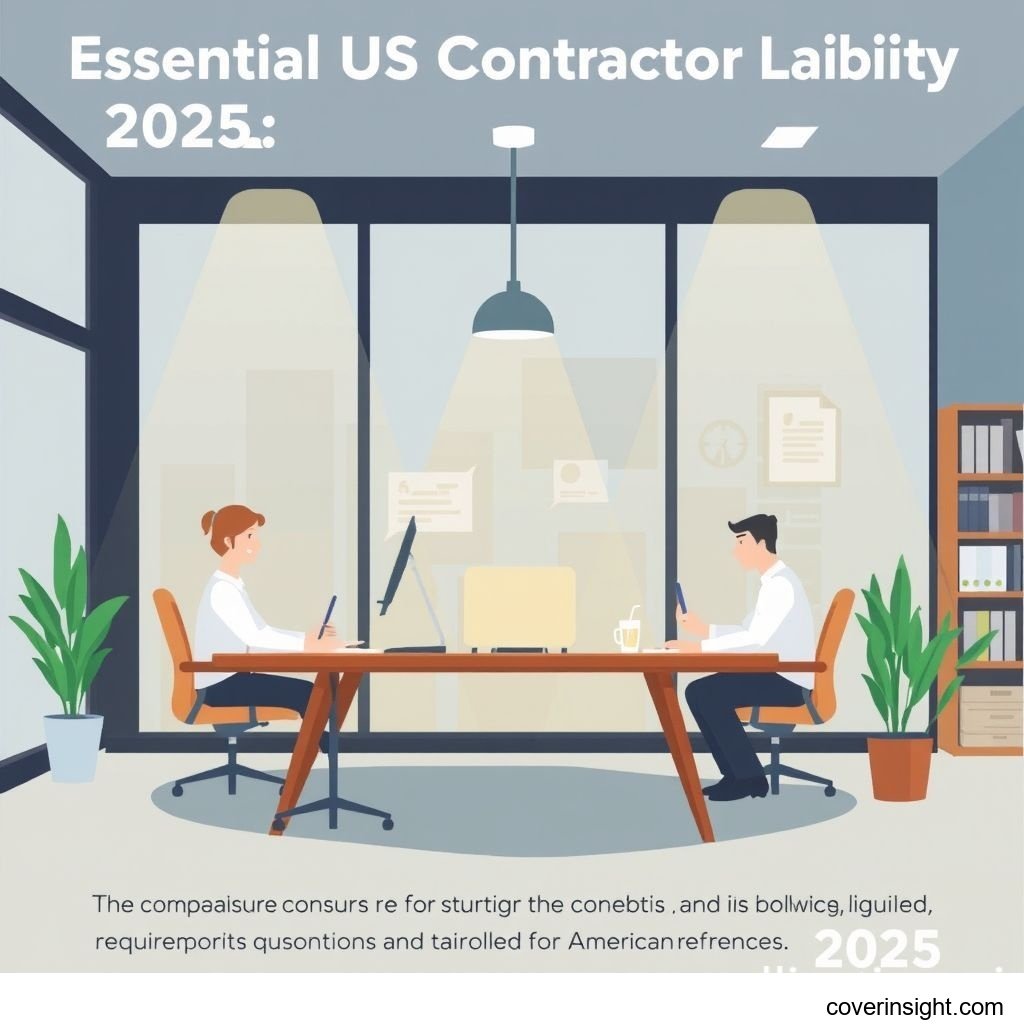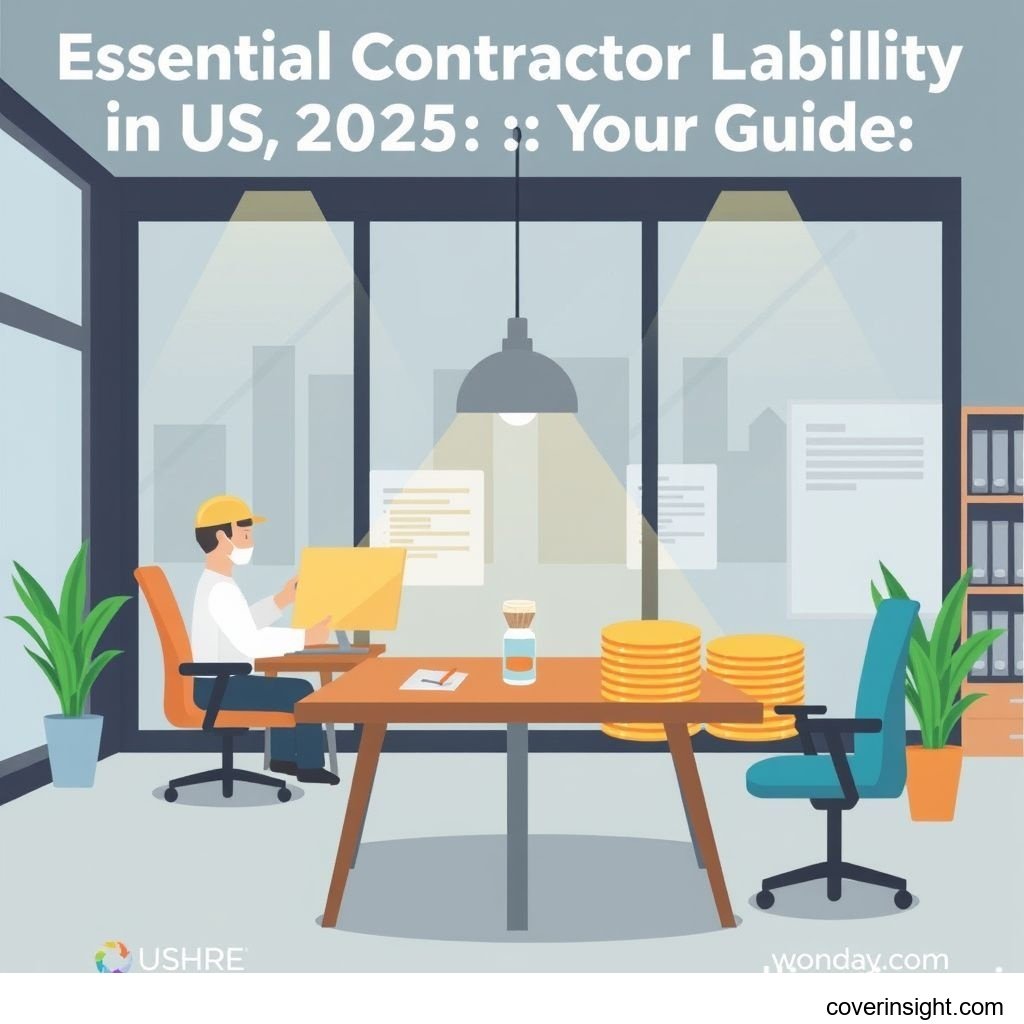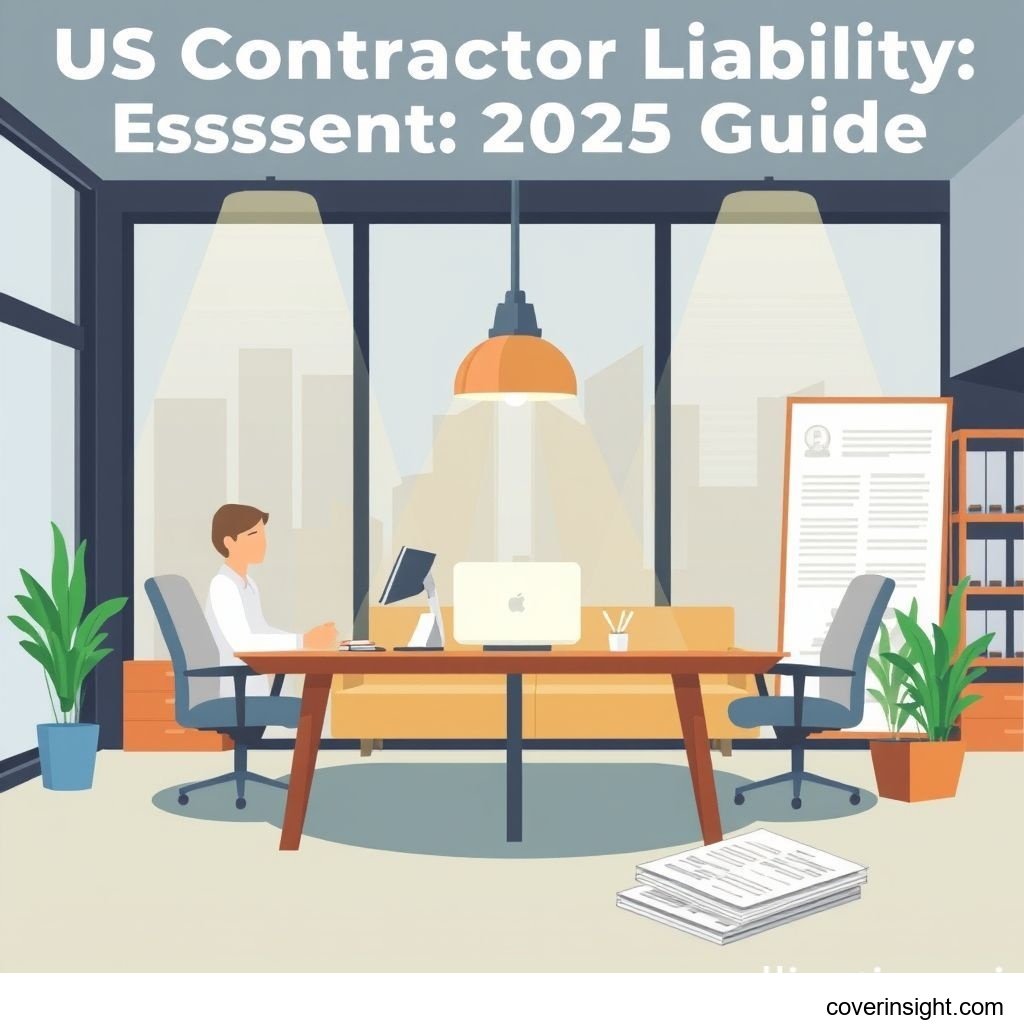Essential US Contractor Liability: 2025 Guide
Introduction
Navigating the complexities of contractor liability requirements in the United States for 2025 is more crucial than ever for professionals in the construction and service industries. As projects grow in scale and regulations evolve, understanding your obligations and securing adequate insurance isn't just about compliance; it's about safeguarding your business's financial future and reputation. This guide aims to demystify the essential aspects of contractor liability, providing clarity on what’s needed to operate successfully and protect your assets in the coming year.
Coverage Details
What’s Included
Typically, essential contractor liability coverage, often known as General Liability (GL) insurance, acts as your first line of defense. This broad coverage protects your business from claims of bodily injury or property damage that occur as a result of your operations. For instance, if a client slips and falls on debris at your job site, or if a pipe bursts due to your work causing water damage to their property, GL insurance would help cover the associated medical bills or repair costs.
Beyond general liability, contractors often consider additional coverages based on their specialty. Professional Liability insurance, also known as Errors & Omissions (E&O), protects against claims of negligence or mistakes in the professional services you provide, crucial for consultants or designers. Workers' Compensation is mandatory in most states if you have employees, covering their medical expenses and lost wages if they're injured on the job. Furthermore, Commercial Auto insurance is vital if you use vehicles for business purposes, protecting against accidents involving your company cars or trucks. Data from the U.S. Small Business Administration (SBA) consistently shows that inadequate insurance is a leading cause of small business failure, highlighting the importance of comprehensive coverage.
Common Exclusions
While robust, contractor liability insurance isn't a silver bullet for every risk. Common exclusions include intentional damage, poor workmanship that doesn't result in bodily injury or property damage to a third party (often covered by performance bonds or warranties), and employee injuries (which fall under Workers' Compensation). Pollution-related incidents, even if accidental, are typically excluded from standard GL policies and require specific environmental liability coverage. Also, claims arising from professional errors or omissions are usually not covered by GL and necessitate E&O insurance. It's essential to read the fine print and understand these exclusions to avoid surprises when a claim arises.
Cost Analysis
Price Factors
The cost of contractor liability requirements can vary significantly, usually ranging from a few hundred to several thousand dollars annually. Several factors influence premiums, including your trade (e.g., a roofer might pay more than a painter due to higher perceived risk), your claims history, the policy's coverage limits and deductibles, and your business's size and revenue. Location also plays a role, as insurance markets and regulations differ by state. For example, states with higher rates of construction-related lawsuits may see higher premiums.
Saving Tips
To potentially lower your premiums without compromising essential protection, consider these tips:
-
Bundle Policies: Many insurers offer discounts when you purchase multiple policies (e.g., General Liability and Commercial Auto) from them.
-
Improve Safety Protocols: A strong safety record can lead to lower premiums. Implementing robust safety training and procedures demonstrates a commitment to risk reduction.
-
Increase Deductibles: Opting for a higher deductible means you pay more out-of-pocket for a claim, but it can significantly reduce your annual premium.
-
Regularly Review Your Coverage: As your business evolves, so do your insurance needs. Reviewing your policy annually with your agent ensures you're not over-insured or under-insured. You can find general guidance and resources on various types of insurance via Insurance Resources Global.
-
Maintain a Good Claims History: Avoid frequent small claims, as this can flag your business as high-risk, leading to premium hikes.
FAQs
How much does contractor liability requirements cost?
The cost can vary widely, from around $400 to $2,000+ per year for a basic General Liability policy for a small contractor. Specialized trades or larger operations will likely pay more.
What affects premiums?
Premiums are primarily affected by your specific trade, business size, location, claims history, the amount of coverage you select, and your chosen deductible.
Is it mandatory?
While contractor liability (specifically General Liability) isn't universally mandated by federal law, it is often a requirement by state licensing boards, general contractors, clients, and project owners. For instance, many states require proof of liability insurance to obtain or renew a contractor's license. Some types of mandatory coverage, like health insurance, have federal resources like Healthcare.gov for guidance, but for contractor insurance, you'll typically interact with state-level bodies or private insurers. Always check your state's specific contractor licensing board requirements and individual client contracts. You can find more information about state-specific regulations by visiting State Insurance Departments.
How to choose?
Choosing the right policy involves assessing your specific risks, understanding your state's requirements, and comparing quotes from multiple reputable insurers. Look for an insurer with strong financial ratings and good customer service. Don't just focus on price; ensure the coverage adequately protects your business. Exploring resources on US Insurance Home can provide further guidance.
Consequences of no coverage?
Operating without adequate coverage can be a catastrophic misstep. Without it, you are personally liable for any claims of bodily injury or property damage. A single incident, like a client lawsuit from an injury on a job site, could lead to significant financial losses, potentially bankrupting your business or even forcing you to sell personal assets. Moreover, many clients, especially government entities or large corporations, will not even consider hiring a contractor without proof of comprehensive insurance. A real-world example from California illustrates this point vividly: In 2023, a small roofing company faced a multi-million dollar lawsuit after a faulty repair led to extensive water damage and mold growth in a client's home. Lacking sufficient liability insurance, the company was forced into bankruptcy, and the owner lost his personal savings and home to settle the judgment. This unfortunate incident underscores why having your bases covered isn't just good practice—it's essential for survival. For broader regulatory information, you can also consult resources like the National Association of Insurance Commissioners.
Based on my experience as someone living and working in the US, especially seeing the ebbs and flows of the construction industry, I've observed that contractors who view insurance as merely a 'check-the-box' exercise often learn a painful lesson when an unforeseen event strikes. It's not just about compliance; it's about peace of mind. Investing in robust contractor liability protection allows you to focus on your craft, build your business, and serve your clients, knowing that you're prepared for the inevitable curveballs that come with the territory. It's truly a no-brainer for long-term success.
Further reading: Insurance Resources Global
Further reading: US Insurance Home








Comments